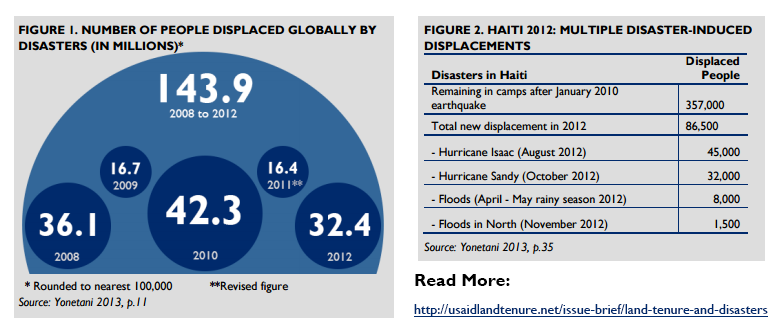Guest commentary by Cynthia Caron, PhD. Dr. Caron is a Land Tenure and Gender Specialist with The Cloudburst Group and an Assistant Professor of International Development and Social Change at Clark University.
On April 25, a 7.8 magnitude earthquake struck Nepal, marking the worst natural disaster to strike the country since 1934. Two and a half weeks later, while the nation was trying to recover, an aftershock with a magnitude of 7.3 hit. Families in Nepal continue to grieve lost loved ones and are reliant on the Government of Nepal, relatives, friends, humanitarian agencies and donors to start rebuilding lives and livelihoods. The earthquake affected eight million people in 39 of Nepal’s 75 districts and destroyed or damaged over 760,000 homes. Drawing from recent research on land tenure and disasters, there are two key points development actors should consider as they move into supporting longer term reconstruction and development efforts in the earthquake-affected districts.
Emergency Shelter: With the monsoon season starting this month, immediate shelter is a priority. As of June 3rd there were 394 sites hosting over 41,000 internally-displaced persons. Emergency or transitional shelter might be established in large camp settings, by placing displaced families with host families, or following debris removal, families might build emergency shelter on their own plots of land. Agencies engaged in camp management or looking after displaced families must be attentive to issues such as the length of time that displaced families might stay on a piece of land owned privately by another individual. In the case of a family taking in and ‘hosting’ a displaced family, a clear understanding of how pressure on resources – such as food growing in the garden or drinking water from the host family’s well, toilets or kitchens – can create tensions should be considered. This will help clarify conditions regarding access to and use of the land and resources and avoid or minimize additional displacements or future conflict.
Community-Driven Enumeration: In order to obtain a nuanced understanding of who was considered to own what land, who occupied particular plots, and what tenancy arrangements existed prior to the earthquake, development actors engaged in shelter and settlements programming should consider funding enumeration activities that facilitate cooperation at the lowest administrative levels. This might include bringing local government officials into horizontal alliances with each other and local NGOs .
Enumeration exercises help identify the complex range of tenure arrangements that are specific to the contexts of the affected districts, which standardized tools might not capture, and in doing so address the antecedents of potential land and housing conflicts and allow for a smooth path to restitution, resettlement, and reconstruction. For example, as housing damage assessments continue, data collection should move beyond the initial two main categories of “government houses and private houses” to capture other informal tenure arrangements existing within these two categories, including various relationships between landowners and tenants, as well as the land and resource rights of women and minority groups who may be particularly vulnerable to loss of these rights after the earthquake.
A robust and diverse housing compensation and reconstruction program will take into account not only a wide range of tenure arrangements, but also different family structures. For example, many rural Nepali families continue to live in joint, extended families not nuclear ones. Therefore, the design of compensation and reconstruction packages should take into consideration the various definitions of what constituted a ‘family’ prior to the earthquake. Policymakers and humanitarian agencies must speak with and listen to organizations on the ground and design policies and assistance packages that reflect the plethora of existing tenure arrangements. This includes recognizing the existence and needs of leaseholders, the landless and others who rely on commonly-held property, as well as property owners without formal documentation, but nonetheless longstanding tenancy arrangements. Attention to such detail can mitigate future conflict within and between families and enhance the rebuilding process.
For more information on building more resilient communities both pre-disaster and during the different phases of post-disaster programming, including relief, recovery, and reconstruction, see the USAID Issue Brief: Land Tenure and Disasters.


